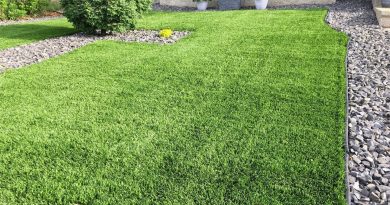Maintenance Is Definitely Important When Considering 3rd Generation And 4G Pitches
Recurrently making time for maintenance of Third generation and 4G soccer and rugby pitches really helps to uphold the high quality and appearance of the pitch, as well as improving standard of play and playing characteristics. Adhering to a personalised routine maintenance plan, which includes measures such as drag brushing, power brushing, infill top ups, de-compaction, and deep-cleansing, helps to keep a pitch in extraordinary physical condition. Suppliers such as¦ provide you with a complete cleaning and maintenance routine and carry out the maintenance for you. Not sustaining a maintenance regime is absolutely not advocated and can cause an expensive repair.
Drag Brushing
Drag brushing is needed to spread out the infill through the entire facility and so it must be conducted a couple of times each week. It safely and effectively disperses the infill and raises the carpet pile. It can also help to counteract the fibres becoming tainted with debris, mud, and muck, that may become deep-rooted inside the fibres. Frequent drag-brushing will enhance the resilience and longevity of the pitch.
Power Brushing
Keeping the turf up-right as well as the infill level acceptable is a necessity for Third generation and 4G pitches. Scheduled power brushing enables you to maintain the decompaction and embed the sand in the grass fibres, which will reduce dirt build-up within the fibres. It may also help to distribute and maintain the infill, and ensure that the carpet pile is raised and opened up. Generally, power brushing guarantees the very best performance out of the pitch by aiding the fundamentals of football and rugby play, such as grip, and lowering the volume of player injuries. What’s more, brushing can improve the durability associated with the pitch. Power brushing must be conducted on a weekly basis.
De-compaction
De-compaction loosens the rubber infill, which facilitates water drainage and controls the feel of the turf. Additionally, it elevates the carpet fibres, and can assist in the reduction of toxic contamination. This protects the carpet fibres from abrasion and improves playing features like stud slide, shock reduction, and ball roll and bounce. De-compaction services must be carried out once per month.
Infill Top Ups
There’s several observable and physical benefits to infill top ups. The rubber fragments that are dispersed throughout the pitch fortify the fibres and assist in keeping them vertical. But the truth is, gradually, the non-reinforced fibres above the infill sag beneath the players feet, and a percentage of infill will eventually be completely removed from the pitch. Displacement of the infill is able to reduce the life span of the pitch, exhaust the carpet fibres, while increasing the rate at which it weakens. The displacement results in the pitch showing signs and symptoms of wear, and also the rubber infill will need to be renewed. Infill top ups comprise of the infill being loosened and cleaned. The rubber levels are dealt with and evenly redistributed, and also the carpet fibres are lifted vertical to ensure an ideal pitch for football and rugby gameplay. The top ups provide an enhanced standard of play and enhances playing characteristics. At a minimum, infill top ups need to take place every 1-2 years. There are 1,000’s of sites with tips having to do with ‘3g pitch maintenance equipment’ this may be one of the better ones www.artificialgrassmaintenance.co.uk
Deep-Cleaning
A more intense cleaning is necessary to strip away dirt, dust, debris, and fragmented carpet fibres from deep within the carpet pile.



